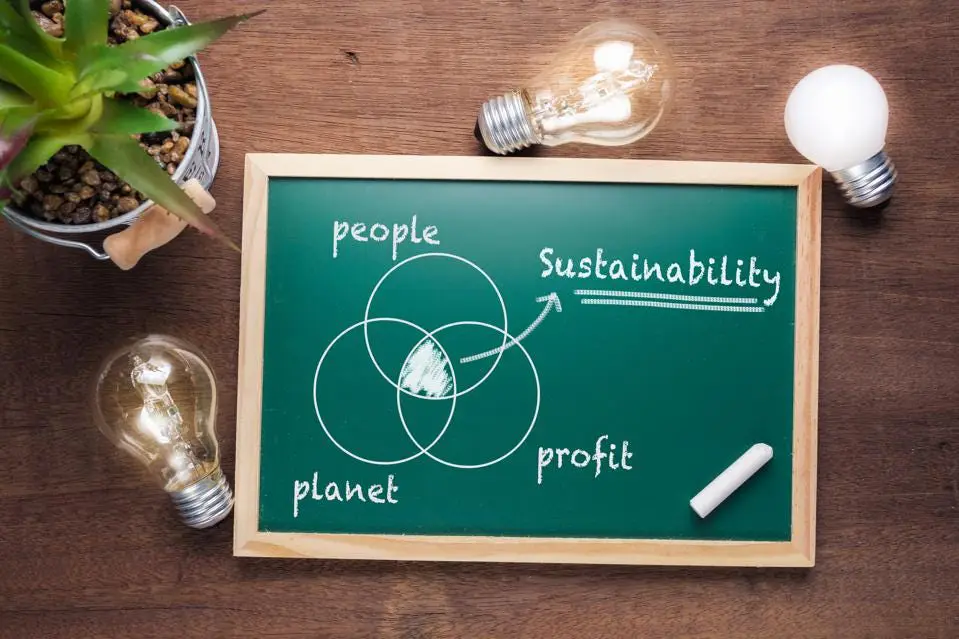
How to Write an Effective Strategy for your Eco-Friendly Brand
Optimizing your strategy to maximize your impact.
Eco-friendly brands are in demand at the moment, and that demand is set to stay. Conscious consumers are actively seeking out brands whose sustainability strategy aligns with their values and are abandoning those which don’t.
In particular, the last year has shone a light on the importance of looking after not only the environment but also each other and ourselves. So brands that are actively eco-friendly are being sought out by consumers which therefore represents an opportunity for creative and innovative growth.
This makes it all the more important to build eco-friendly strategies that accurately and authentically reflect your brand. And to make it effective, sustainability needs to be embedded into your organization and your actions. We take a look at some of the key ways in which you can do this.
Define a mission
To stand out as an eco-friendly, sustainable brand, you need to have a specific mission that differentiates you from other companies. This should be linked to your product and aligned with your target customers.
For example, if you are selling beauty products, your mission could be to reduce plastics in the environment. To achieve this you could commit to only supplying products made and packaged with plastic-free, compostable materials.
Remember that it needs to be true and demonstrable. Make it specific and highlight it in the first line of your strategy in a clear, accessible way.
Connect your values

Authenticity is key when building your eco-friendly strategy. It needs to incorporate your values and build a connection between your brand the consumer. Your values will be the foundation of your marketing campaigns and will allow you to tell a story in a way that your customers can relate to.
Begin with three core values that directly relate to your product. Building on the previous example of reducing plastic waste, this could include using pre-used or repurposed packaging, rather than using a new box or bag for each shipment.
Again, your values should be specific and you should be able to demonstrate what you are doing to uphold them.
Research your competitors
A successful strategy takes into account what others in your industry are doing so that you can do it better! Make a note of the strengths and weakness of your competitors, the tone of voice and anything else that makes a brand stand out. Then analyze the data to see how your strategy could improve upon it.
Thorough competitor analysis is essential when you’re building your roadmap to ensure your messaging is clear, relevant and unique.
Develop a style
A clean, crisp and appealing style for your brand will help to attract and retain potential customers. There are some key elements that you can focus on and have running throughout your strategy:
· Choose a corporate color that speaks to sustainability. Green, blue, white, yellow and purple are colors
that are typically associated with eco-friendly brands.
· Design a simple but representative logo using your corporate color scheme.
· Decide upon a tone of voice that is accessible to your target audience and use it throughout your company strategy.
Design a solid marketing strategy

Taking into account all of the above, a solid marketing strategy is crucial to effectively communicate your eco-friendly brand and to retain the attention of potential customers. There are four main areas to focus on:
· Social media channels are a great way of growing your customer base, but they are also a great way of finding inspiration and connecting with like-minded organisations.
· Blogs are good for growing credibility amongst your audience. Build an outline for your blog content into your strategy leaving room for adapting and responding to current issues as they arise. Additionally, incorporating well-researched Search Engine Optimization will ensure your content is easily found.
· Videos are a powerful way of bringing your eco-friendly brand to life. Use videos to spotlight your sustainable suppliers, for example, or to educate customers on the importance of your mission.
· Printed marketing still has a place in many company strategies, although it should be done mindfully. Only print as much as you need and be careful to use sustainable, recycled and recyclable materials.
Partner with other
eco-brands
Strong partnerships are an important part of sustainability. Building relationships and partnering with other eco-friendly brands is a great way of supporting local businesses and of showing that you are committed to your mission.
Connect your mission with direct action
Part of authenticity is going the extra mile to contribute to the issue that inspired your mission. Donating a portion of your profits is a good start but try to avoid ‘greenwashing’ and instead become actively involved with local initiatives. Regularly taking part in litter-picks, for example, is a great way of showing you care about the environment. It could also inspire your customers into action!
Review and optimize your processes and operations
Your eco-friendly strategy shouldn’t stop at what you can do right now, it should include a long term plan to review your processes and operations. This could include ‘greening’ your deliveries, becoming zero-waste or implementing measures to help employees reduce their environmental footprints.
Sustainable solutions are constantly evolving so it is also important to build in reviews to ensure you are on top of the latest innovations and developments.
Conclusion
To become credible as an eco-friendly brand, you need to have an effective strategy that is reflected throughout your business. Developing a strong, relevant and focused mission and having a set of specific values to support it is key.
It is also important to build into your strategy a marketing and communications plan that will effectively support your mission whilst bringing your customers along on the journey with you.
When you are building your strategy, authenticity is perhaps the most vital component. As people are becoming more conscious of sustainability issues, greenwashing is easily identified and consumers will vote with their feet.
